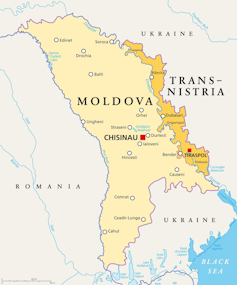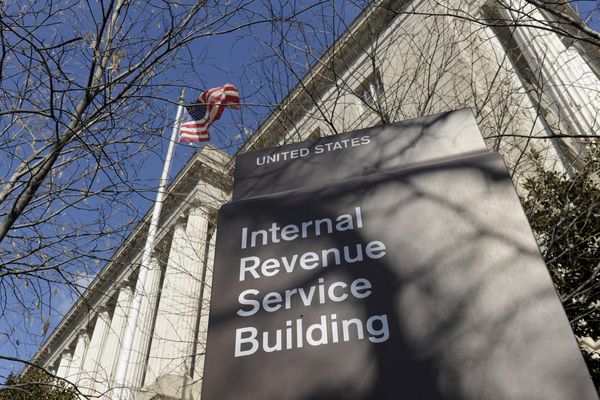Almost exactly a year ago – on February 17 2022 – we published a story by David Galbreath, an expert in international security from the University of Bath. In it he pointed to the fact that – despite the Kremlin’s repeated assurances to the contrary – an invasion of Ukraine was looking more and more likely.
He provided three possible scenarios. The first was a decapitation of Ukraine via a rapid incursion through Belarus supported by pro-Moscow elements operating in Kyiv to remove the current government and replace it with a friendly administration. His second scenario was for a turbocharging of the war in the east which would spill out into the rest of the country –– or at least those areas with majority Russian-speaking populations, something Russia was to attempt in September when it annexed the four regions of Donetsk, Kherson, Luhansk and Zaporizhzhia.
The third scenario was a full invasion: combining the two aforementioned options with a push to completely defeat Ukraine’s military and take total control of the country.
Read more: Ukraine: what would a Russian invasion actually look like? These are the three most likely scenarios
We now know which option Vladimir Putin chose to take.
Over the next week or so -–and with the help of our colleagues in our global network – we plan to take a detailed look at 12 months of war in Ukraine: the battlefield, the diplomatic front, the geopolitical point of view and the human and economic costs. We are able to call on some of the world’s leading academic experts to explain the issues and forecast some of the developments we are likely to see as the war enters its second (and, hopefully, final) year.
It seems fitting, then, to look at how the conflict might now develop in 2023. Florent Parmentier and Cyrille Bret, experts in security and geopolitics at Sciences Po in Paris, see a bloody stalemate at present, in which troops on both are bogged down in bitter fighting in the east, with many hundreds of casualties (some experts – including from the UK’s ministry of defence – believe that the attrition rate could be at its highest since the first few weeks of the war).
This has a great deal to do with the season. Harsh winter weather makes it hard to manoeuvre effectively, ruling out the sort of lightning offensives with which Ukraine startled Russia in late summer in 2022.
Partmentier and Bret have brainstormed the three most likely ways in which this conflict will develop in the months ahead: a major Russian military setback, with big losses of men and territory; the reverse scenario in which Russia mounts a major successful offensive having learned from the mistakes it made in 2022; and finally, a drawn-out conflict leading to exhaustion and war weariness – not only in Russia and Ukraine, but also among those Kyiv is depending on for the military supplies that are keeping the country afloat.
Read more: Almost a year on, Russia's war against Ukraine could go in three different directions
This is our weekly recap of expert analysis of the Ukraine conflict. The Conversation, a not-for-profit newsgroup, works with a wide range of academics across its global network to produce evidence-based analysis. Get these recaps in your inbox every Thursday. Subscribe here.
It should go without saying that western military aid has been the lifeline for Ukraine’s war effort and a great deal of credit goes to the country’s president, Volodymyr Zelensky, for the tireless diplomacy with which he has persuaded western leaders to supply both sophisticated weapons systems and the training to use them effectively.
This has happened in spite of understandable misgivings that arming Ukraine is inevitably trumpeted by the Kremlin as proof that what was planned as a limited “military exercise” in Ukraine is turning into a confrontation between Russia and Nato.
But David Dunn, a professor of international politics at the University of Birmingham, believes that while these misgivings are perfectly understandable in the face of Russian threats to go nuclear, by placing limits on the sorts of weapons it is supplying, the west is effectively hobbling Ukraine’s ability to defend itself.
Kyiv’s allies remain adamant that they will only supply defensive weaponry and nothing that could allow Ukraine to strike at targets on Russian territory. But this ignores the fact that Russia can launch missiles from well within its own borders. A Russian jet fighter reportedly shot down a Ukrainian aircraft at a range of 200km from well within the safety of Russian airspace. Dunn believes Ukraine’s allies need to rethink this as a matter of urgency.
Read more: Ukraine 12 months at war: why Kyiv's western allies must rethink the limits of their military aid
On the Russian front
Whether it can be put down to the Ukrainian people’s staunch fighting spirit, or the supply of sophisticated western weaponry that has been brought to bear on Russia’s war machine, Russian soldiers have not proved to be the formidable fighting force that some experts predicted before the Ukraine conflict started.
Over the months it has become clear that Putin has struggled to reinforce his front line. Reservists were called up, then civilians – and even those with medical conditions – started to be conscripted. Jails were recruiting grounds for criminals to join the notorious Wagner mercenary units. As the casualty count rose, some soldiers were even asked to bring medical kits from home as there were not enough available in the field.
Morale is reported to be low, and in some cases equipment is short. None of this suggests a highly motivated fighting force, as Jenny Mathers from Aberystwyth University reports in her analysis of what the past 12 months has been like for the ordinary Russian soldier.
Read more: Ukraine war: what the last 12 months has meant for the ordinary Russian soldier
You might think it surprising, given the death toll among his forces, that Putin can still command a great deal of public support for his conduct of the war. But then you have to consider the role of Russia’s now almost completely compliant media in promoting the war to their domestic audience. Virtually all the broadcast media consumed by the Russian public is under tight state control, while print and (much of) the online news media is also largely Kremlin-compliant.
James Rodgers, who teaches and researches journalism at London’s City University, was a BBC correspondent in Moscow for many years and talks us through the iron grip with which Putin now controls Russia’s news media, something reminiscent of the Bolsheviks a century ago, who also understood the importance of controlling the message.
Read more: Ukraine war 12 months on: the role of the Russian media in reporting – and justifying – the conflict
A wider view
The people of Moldova, meanwhile, have been watching nervously – literally from the sidelines. It’s well known that Putin has long been casting acquisitive glances at Ukraine’s small neighbour, which has its own troublesome Russian enclave in Transnistria.

Stefan Wolff, an expert in international security at the University of Birmingham and a regular contributor to our coverage of the war, reports about an alleged plan, the “soccer plot”, to destabilise Moldova involving infiltration by foreign agitators from Russia, Montenegro, Belarus and Serbia.
As Wolff writes, the Moldovan government recently prevented Serbian football fans crossing into the country ahead of a European Conference League match against a Moldovan side. A takeover of Moldova – however far-fetched the idea of a “soccer plot” may sound – would allow Russia to open a second front on its southern border, close to the city of Odesa.
An increasingly costly ‘cold’ war
Meanwhile, thanks to the war in Ukraine, the average household’s energy costs have nearly doubled on average around the world, according to our team of energy experts from the universities of Groningen and Birmingham.
Flowing into the cost of living crisis in many countries around the world, the spike in energy prices is an inevitable drag on the morale of countries that have lined up to support Ukraine’s struggle against Russia.
Read more: Russia–Ukraine war has nearly doubled household energy costs worldwide – new study
Ukraine Recap is available as a weekly email newsletter. Click here to get our recaps directly in your inbox.
This article was originally published on The Conversation. Read the original article.







